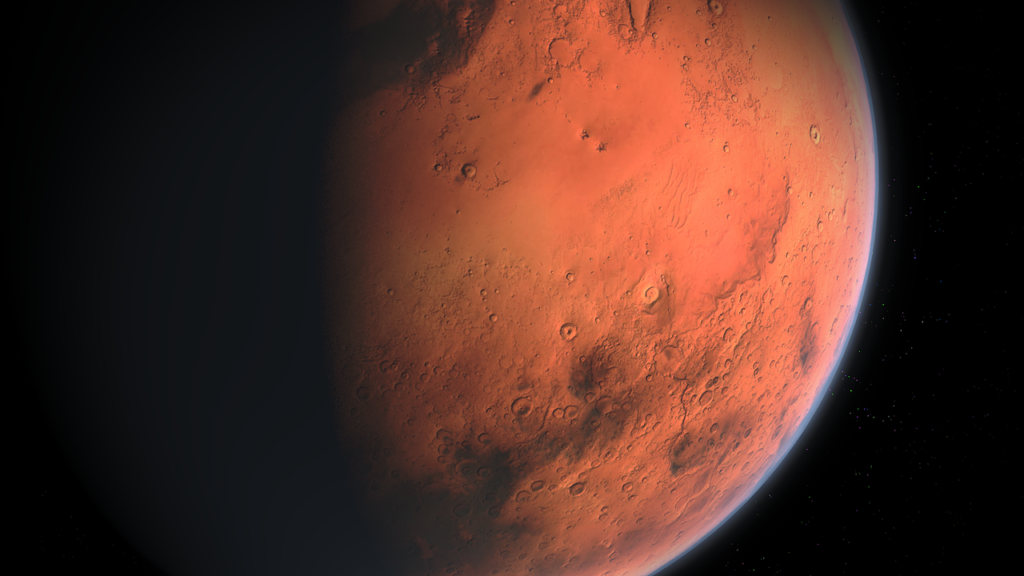
Global security and aerospace company Lockheed Martin said on 2 May it had “successfully completed” construction of the heat shield for the Mars 2020 rover – one half of the craft’s protective “aeroshell” – performing a final static test to confirm its structural integrity after “after exposing it to flight-like thermal conditions”.
The Mars 2020 Rover mission forms part of the US National Aeronautics and Space Administration’s (NASA) Mars Exploration Program, a long-term effort of robotic exploration of the fourth planet in our solar system. The mission will explore the potential for life on Mars, seeking “signs of habitable conditions on Mars in the ancient past” as well as “signs of past microbial life itself”.
The rover’s finished aeroshell will – at least theoretically – “encapsulate [the] NASA Jet Propulsion Laboratory’s Mars 2020 rover from the punishing heat and friction of entry through the Martian atmosphere”. The heart shield aerodynamics are intended to serve as a “brake” to slow the spacecraft down from around 12,000 mph (19,300 kph) so the structure “needs to be flawless”.
It is the tenth aeroshell system that Lockheed Martin has designed for NASA and measures 15 feet (4.5 meters) in diameter. In a press release, the company described the mission as “one of the most challenging entry, descent and landings ever attempted”.
The static test was conducted on 25 April and was designed to mimic the load that the heat shield is expected to experience during the entry phase, the “most extreme” part of its journey. Lockheed Martin engineers used vacuum pumps to simulate the pressure of approximately 140,000 pounds on the structure, which was tested to 120 percent of the expected flight load to push it to the limit.
This particular test used a new form of instrumentation, augmenting conventional strain gauges and extensometers – that monitor structural response at distinct points during loading – with photogrammetry or “digital image correlation”. Lockheed Martin partnered with NASA’s Langley Research Center to integrate this new technology into the testing process.
It allowed the team working on the project to “monitor full-field strains and displacements over the entire visible area of the structure in real time”. A “vinyl wrap” with different visual cues (aka “dark random speckles over a white background) was applied to the heat shield. During the test, a set of digital cameras optically monitored changes in the pattern, generating a 3D image of the displacements and surface strains as the applied load increased.
“Our experience building aeroshells for NASA Mars missions does not mean that it is ‘easy’,” Neil Tice, Lockheed Martin Mars 2020 Aeroshell program manager, said in a statement. “Tests like this structural test are absolutely essential to ensuring mission success in the long-run.”
“While we have used [the] full-field photogrammetry technique . . . in the past, this is the first successful implementation on official flight hardware,” Dr. Sotiris Kellas, NASA Langley aerospace engineer and lead for the technical demonstration, added. “This technology will allow us to safeguard hardware during testing but more importantly provide data for test analysis correlation, and improvement of our design and analysis tools.”
The new rover includes a drill that can collect core samples of rocks and soils that are deemed “most promising”, and will set them aside in a “cache” on the planet to be potentially returned to Earth on a future mission. That would allow scientists to study the samples in laboratories will special room-sized equipment that would be too large to take to Mars.
NASA also plans to use the mission to “gather knowledge and demonstrate technologies that address the challenges of future human expeditions to Mars”. This includes testing a method to produce oxygen from the planet’s atmosphere, identifying other possible resources such as subsurface water, improving landing techniques, and looking at weather, dust, and other potential environmental conditions that could affect future astronauts living and working on Mars. The mission is expected to launch between 17 July and 5 August 2020 when Earth and Mars will be in good positions relative to each other for landing on the planet. Basically, it will take less power to travel to Mars during that window in time, compared to other times when Earth and Mars are in different positions in their orbits. The rover is expected to land on Mars on 18 February 2021 and the subsequent mission is timed to last for at least one Mars year, which is equivalent to around 687 days on Earth.


Leave a Reply